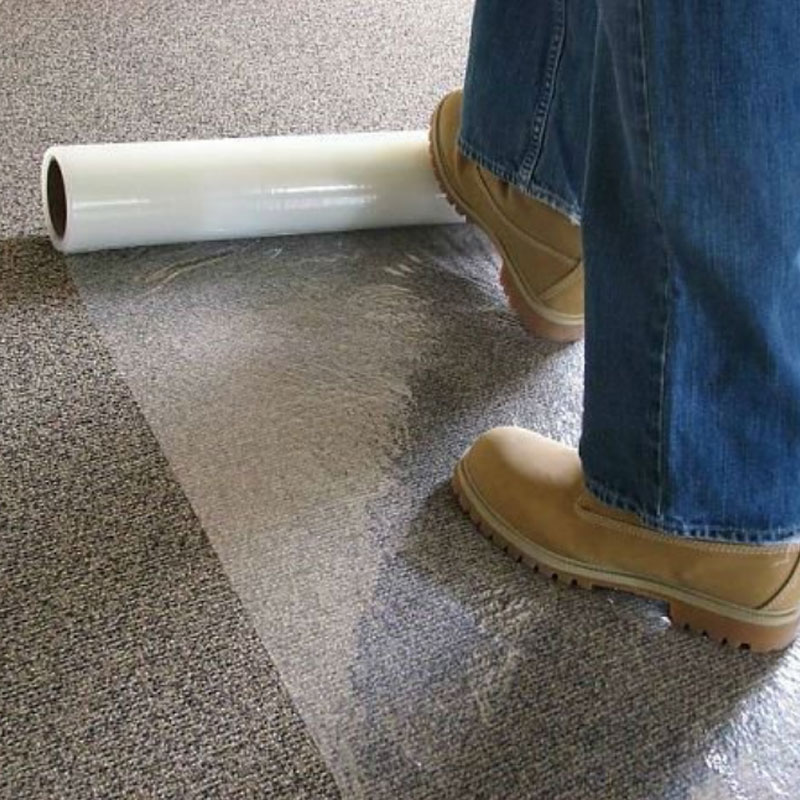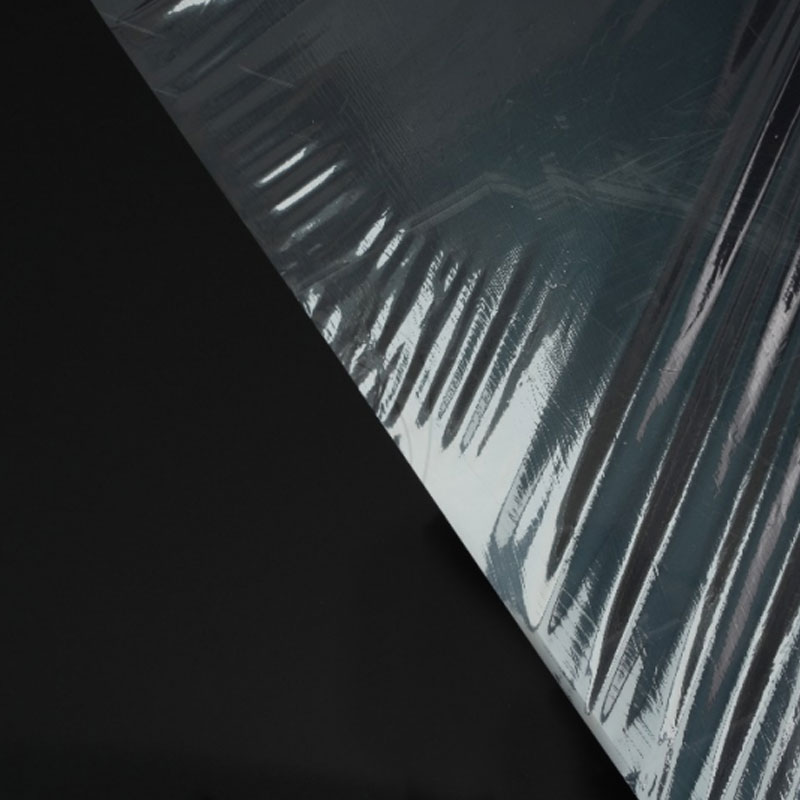1.What is Non-Woven Protection Fabric and How is it Made?
Non-woven protection fabric is a versatile and essential material widely used in various industries for its unique properties and applications. Unlike traditional woven fabrics, non-woven fabrics are made by bonding or entangling fibers together through mechanical, chemical, or thermal processes. This results in a fabric that is not only durable and lightweight but also highly adaptable to different uses.
Manufacturing Processes
The production of non-woven protection fabric involves several key methods, each contributing to the fabric's specific characteristics:
Spunbond Process: This method involves extruding molten polymer through a spinneret to create continuous filaments. These filaments are then laid randomly on a conveyor belt to form a web, which is subsequently bonded through heat and pressure. The spunbond process is known for producing strong and durable non-woven fabrics, making it ideal for applications requiring robust protection.
Meltblown Process: In this process, molten polymer is extruded through a die and blown into fine fibers using high-speed hot air. These fibers are collected on a conveyor belt to form a web, which is then bonded. Meltblown non-woven fabrics are characterized by their fine fiber structure and high filtration efficiency, making them suitable for applications such as medical masks and air filters.
Needle Punching: This mechanical process involves repeatedly punching a web of fibers with barbed needles to entangle them. The resulting fabric is dense and durable, with excellent mechanical strength. Needle-punched non-woven fabrics are commonly used in geotextiles, automotive interiors, and protective clothing.
Chemical Bonding: This method uses chemical binders to bond fibers together. The web of fibers is saturated with a chemical adhesive and then dried and cured to form a cohesive fabric. Chemical bonding is often used to produce non-woven fabrics with specific functional properties, such as flame retardancy or water resistance.
Key Properties
Non-woven protection fabric offers several advantageous properties that make it suitable for various applications:
Durability: The bonding processes used in manufacturing non-woven fabrics result in strong and durable materials that can withstand significant wear and tear.
Lightweight: Despite their strength, non-woven fabrics are lightweight, making them easy to handle and use in different applications.
Breathability: Non-woven fabrics can be designed to allow air and moisture to pass through, providing comfort and breathability in applications like medical gowns and protective clothing.
Cost-Effectiveness: The manufacturing processes for non-woven fabrics are typically less complex and less expensive than those for woven fabrics, resulting in cost-effective solutions for various industries.
2.What Are the Key Applications of Non-Woven Protection Fabric?
Non-woven protection fabric is utilized across a wide range of industries due to its versatile nature and unique properties. Its ability to provide protection, filtration, and insulation makes it an indispensable material in many fields.
Medical and Healthcare
In the medical and healthcare industry, non-woven protection fabric plays a critical role in ensuring hygiene and safety. Some of the key applications include:
Medical Masks and Respirators: Non-woven fabrics, particularly those produced through the meltblown process, are used in the manufacturing of surgical masks and N95 respirators. These fabrics provide effective filtration of airborne particles and pathogens, helping to protect healthcare workers and patients from infections.
Surgical Gowns and Drapes: Non-woven protection fabrics are used to produce disposable surgical gowns and drapes that provide a barrier against fluids and contaminants. These fabrics are lightweight, breathable, and comfortable, ensuring the safety and comfort of healthcare professionals during procedures.
Wound Dressings: Non-woven fabrics are used in wound dressings due to their softness, absorbency, and ability to maintain a sterile environment. They help protect wounds from infection and promote faster healing.
Construction and Building
In the construction and building industry, non-woven protection fabrics are used for a variety of applications that require durability and protective properties:
Geotextiles: Non-woven geotextiles are used in civil engineering projects for soil stabilization, erosion control, and drainage. Their high strength and permeability make them ideal for reinforcing soil and preventing erosion in road construction, retaining walls, and embankments.
Roofing Underlayment: Non-woven fabrics are used as underlayment materials in roofing systems. They provide a moisture barrier and help protect the roof structure from water damage, extending the lifespan of the roofing system.
Soundproofing and Insulation: Non-woven fabrics are used in building insulation and soundproofing applications. Their lightweight and flexible nature allows them to be easily installed in walls, floors, and ceilings, providing thermal and acoustic insulation.
Automotive Industry
The automotive industry relies on non-woven protection fabrics for a variety of interior and exterior applications:
Interior Trim and Upholstery: Non-woven fabrics are used in automotive interiors for seat covers, headliners, and door panels. Their durability, comfort, and aesthetic appeal make them an excellent choice for enhancing the interior design of vehicles.
Acoustic Insulation: Non-woven fabrics are used for acoustic insulation in vehicles to reduce noise and vibration. They help create a quieter and more comfortable driving experience by absorbing sound and minimizing road noise.
Air and Cabin Filters: Non-woven fabrics are used in automotive air and cabin filters to remove dust, pollen, and other contaminants from the air entering the vehicle. Their high filtration efficiency ensures clean and breathable air inside the vehicle.
3.How Does Non-Woven Protection Fabric Contribute to Sustainability?
Non-woven protection fabric not only offers practical benefits for various industries but also contributes to sustainability and environmental protection. The manufacturing processes and properties of non-woven fabrics support eco-friendly practices and promote a greener future.
Recyclability and Reusability
Non-woven fabrics can be made from recyclable materials, reducing waste and conserving resources. For example, polypropylene, a common material used in non-woven fabric production, is recyclable and can be reused to create new products. Additionally, some non-woven fabrics are designed to be reusable, further minimizing their environmental impact.
For instance, non-woven shopping bags made from recycled materials offer a sustainable alternative to single-use plastic bags. These reusable bags help reduce plastic waste and promote eco-friendly shopping practices. In the medical industry, non-woven fabrics used in sterilization wraps and other reusable products contribute to waste reduction and support sustainable healthcare practices.
Energy Efficiency in Production
The production processes for non-woven fabrics are typically energy-efficient compared to traditional woven fabrics. The ability to produce large quantities of non-woven fabric quickly and with less energy consumption makes it a more sustainable option. The use of advanced manufacturing technologies and optimized processes further enhances energy efficiency, reducing the carbon footprint of non-woven fabric production.
For example, the spunbond process, known for its energy efficiency, produces strong and durable non-woven fabrics with minimal energy consumption. This energy-efficient production process supports sustainable manufacturing practices and helps reduce greenhouse gas emissions.
Biodegradability and Compostability
Some non-woven fabrics are designed to be biodegradable and compostable, offering an environmentally friendly solution for disposable products. These fabrics break down naturally over time, reducing the burden on landfills and minimizing environmental pollution.
For example, biodegradable non-woven fabrics used in agricultural applications, such as crop covers and mulch films, help protect crops while decomposing naturally into the soil. This promotes sustainable farming practices and reduces the environmental impact of agricultural waste.


 English
English
 English
English русский
русский Français
Français Español
Español Português
Português عربى
عربى











